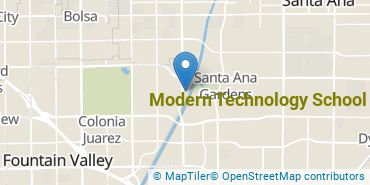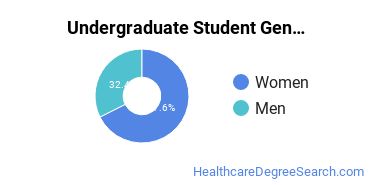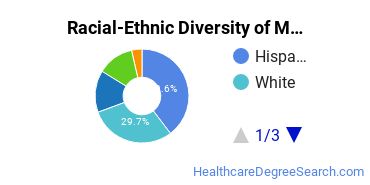Modern Technology School Healthcare Programs
Located in Fountain Valley, California, Modern Technology School is a private for-profit institution. The location of Modern Technology School is great for students who prefer living in an urban area.
Featured schools near , edit
Where Is Modern Technology School?

Contact details for Modern Technology School are given below.
| Contact Details | |
|---|---|
| Address: | 16560 Harbor Blvd., Suite K, Fountain Valley, CA 92708-9821 |
| Phone: | 714-418-9100 |
| Website: | www.mtschool.edu |
How Do I Get Into Modern Technology School?
You can apply to Modern Technology School online at: https://www.mtschool.edu/
Can I Afford Modern Technology School?
Student Loan Debt
Almost 66% of college students who graduated with the class of 2018 took out student loans, but that percentage varies from school to school. At Modern Technology School, approximately 72% of students took out student loans averaging $10,815 a year. That adds up to $43,260 over four years for those students.
Modern Technology School Undergraduate Student Diversity
Gender Diversity
Of the 95 full-time undergraduates at Modern Technology School, 27% are male and 73% are female.

Racial-Ethnic Diversity
The racial-ethnic breakdown of Modern Technology School students is as follows.

| Race/Ethnicity | Number of Grads |
|---|---|
| Asian | 9 |
| Black or African American | 4 |
| Hispanic or Latino | 36 |
| White | 28 |
| International Students | 2 |
| Other Races/Ethnicities | 16 |
Modern Technology School Healthcare Concentrations
The table below shows the number of awards for each concentration.
| Major | Basic Certificate | Undergraduate Certificate | TOTAL |
|---|---|---|---|
| Radiologic Technology | 0 | 61 | 61 |
| Diagnostic Medical Sonography/Sonographer and Ultrasound Technician | 0 | 20 | 20 |
| Medical/Clinical Assistant | 4 | 0 | 4 |
| TOTAL | 4 | 81 | 85 |
References
*The racial-ethnic minorities count is calculated by taking the total number of students and subtracting white students, international students, and students whose race/ethnicity was unknown. This number is then divided by the total number of students at the school to obtain the racial-ethnic minorities percentage.
More about our data sources and methodologies.
